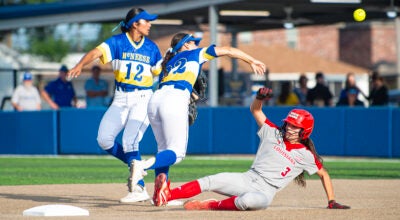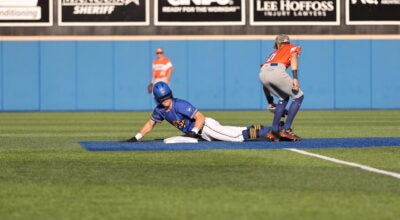Jennings High students help solve mock crime
Published 11:16 am Saturday, March 16, 2013
JENNINGS — The age-old crime solver question of “Who done it?” took on a new meaning recently for students at Jennings High School.
Nearly 80 ninth-grade physical science students at Jennings High and their counterparts at Columbia (S.C.) High School were challenged to execute proper crime-scene-processing techniques to help solve a mock videotaped crime involving a school burglary.
“The students had to analyze the crime scene to come up with suspects and try to solve the crime,” teacher Julie Richard said.
After discussing the crime scene and evidence in the classroom, students from both schools held a teleconference to evaluate their findings and discuss the science behind investigating a crime via live video link with Officer Eric Middendorf and Detective Brian Schmidt of the St. Louis County Police Department in St. Louis.
During the hourlong program, students and officers discussed evidence left behind on the videotaped crime scene, including fibers, blood, fingerprints and shoe prints. They also discussed witness interviews, filing police reports, solving crimes and identifying suspects.
“I learned how to process a situation like this, so if something happens I can tell the police,” student Breann Davis said.
Davis led the group in a detailed discussion of three potential witnesses seen near the school in the video before the break-in.
Witness statements are a vital part of the investigation, and the more “physical features” witnesses can provide about suspects, the better, Middendorf told the students.
Student Kristy Dunn said she learned to react to certain incidents and the process it takes to solve a case.
In her analysis of the crime scene, Dunn described fingerprints left on the windows and doorknob and blood left on the window sill and a rag dropped in the doorway.
Classmate Lane LeBlanc observed the weather at the crime scene and how it may have affected the evidence.
“Fingerprints are from the oil in your fingers,” LeBlanc said. “Oil and water don’t mix, so the dampness wouldn’t have messed up the fingerprints. The blood evidence would not have been affected either because water does not destroy DNA.”
Student Grace Anne Bonin said the experience taught her how police collect evidence and how they figure out what happened and who did it.
“If something happens to me, I will know what to do and help the police and detectives to make it easier for them to solve it,” student Halley Vo added.
Student Mark Hollier said solving a crime is not as easy as crime dramas on television make it look.
“TV shows don’t show the full details and theories in processing a crime scene,” Hollier said.
Student Dodi Bouley said he learned how police collect evidence and the process they go through to find the suspect.
Fingerprints are the most helpful because there is a large database of fingerprints, Bouley said.
“This would help narrow down suspects,” he said. “Then the DNA from the blood could give a positive ID.”
Nearly 80 ninth-grade physical science students at Jennings High and their counterparts at Columbia (S.C.) High School were challenged to execute proper crime-scene-processing techniques to help solve a mock videotaped crime involving a school burglary. (Doris Maricle / American Press)





